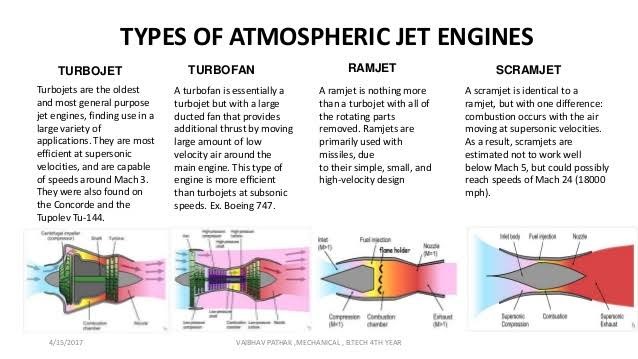Ahmedabad
(Head Office)Address : 506, 3rd EYE THREE (III), Opp. Induben Khakhrawala, Girish Cold Drink Cross Road, CG Road, Navrangpura, Ahmedabad, 380009.
Mobile : 8469231587 / 9586028957
Telephone : 079-40098991
E-mail: dics.upsc@gmail.com

Hypersonic Glide Vehicle
News: Recently, it has been reported that China tested a nuclear-capable hypersonic glide vehicle that circled the globe before speeding towards its target. Several countries, including the US, Russia and China, are developing hypersonic missiles which travel at a speed five times that of sound.Though slower than ballistic missiles, they are harder to intercept and can be manoeuvred.
Hypersonic Speed and Technology:
• Hypersonic speeds are 5 or more times the Mach or speed of sound.Mach Number describes an aircraft’s speed compared with the speed of sound in air, with Mach 1 equating to the speed of sound i.e. 343 metre per second.
• Hypersonic cruise missiles are the ones that use rocket or jet propellant through their flight and are regarded as being just faster versions of existing cruise missiles.
• Hypersonic Glide Vehicle (HGV) missiles first go up into the atmosphere on a conventional rocket before being launched towards their target.
• Most hypersonic vehicles primarily use the scramjet technology, which is a type of Air Breathing propulsion System.This is extremely complex technology, which also needs to be able to handle high temperatures, making the hypersonic systems extremely costly.
Indian Scenario:
• India is especially concerned with the latest developments considering relations with China in the recent past. Such capabilities highlight the threat for our space assets along with the surface assets.
• Hypersonic technology developments, in the backdrop of growing US-China rivalry and a year-long standoff with Indian forces in eastern Ladakh, is certainly a threat for India's space assets along with the surface assets.The offence system operating at these speeds would mean a requirement to develop defence systems at these speeds.India, too, is working on hypersonic technologies.
• As far as space assets are concerned, India has already proved its capabilities through the test of ASAT under Mission Shakti.Hypersonic technology has been developed and tested by both DRDO and ISRO.
• Recently, DRDO has successfully flight-tested the Hypersonic Technology Demonstrator Vehicle (HSTDV), with a capability to travel at 6 times the speed of sound.
• Also, a Hypersonic Wind Tunnel (HWT) test facility of the DRDO was inaugurated in Hyderabad. It is a pressure vacuum-driven, enclosed free jet facility that simulates Mach 5 to 12.
Air Breathing Propulsion System
• These systems use atmospheric oxygen, which is available up to about 50 km of earth’s surface to burn the fuel stored onboard thereby making the system much lighter, more efficient and cost effective.
• Examples of Air Breathing Propulsion System include the Ramjet, Scramjet, Dual Mode Ramjet (DMRJ).
Ramjet:
• A ramjet is a form of air breathing jet engine that uses the vehicle's forward motion to compress incoming air for combustion without an axial compressor.Fuel is injected in the combustion chamber where it mixes with the hot compressed air and ignites.
• Ramjets cannot produce thrust at zero airspeed; they cannot move an aircraft from a standstill.
• A ramjet-powered vehicle, therefore, requires an assisted take-off, like a rocket assist, to accelerate it to a speed where it begins to produce thrust.The ramjet works best at supersonic speeds and as the speed enters the hypersonic range, its efficiency starts to drop.
Scramjet:
• Scramjets are a category of engines designed to handle airflows of speeds in multiples of the speed of sound.
• In an air-breathing scramjet engine, air from the atmosphere is rammed into the engine’s combustion chamber at a supersonic speed of more than Mach two.
• In the chamber, the air mixes with the fuel to ignite a supersonic combustion but the cruiser’s flight will be at a hypersonic speed of Mach six to seven. So it is called supersonic combustion ramjet or Scramjet.
Dual Mode Ramjet (DMRJ):
• The third concept is a mix of ramjet and scramjet, which is called DMRJ.
• There is a need for an engine which can operate at both supersonic and hypersonic speeds.
• A DMRJ is an engine design where a ramjet transforms into a scramjet over Mach 4-8 range, which means, it can operate in both the subsonic and supersonic combustor mode.

Address : 506, 3rd EYE THREE (III), Opp. Induben Khakhrawala, Girish Cold Drink Cross Road, CG Road, Navrangpura, Ahmedabad, 380009.
Mobile : 8469231587 / 9586028957
Telephone : 079-40098991
E-mail: dics.upsc@gmail.com
Address: A-306, The Landmark, Urjanagar-1, Opp. Spicy Street, Kudasan – Por Road, Kudasan, Gandhinagar – 382421
Mobile : 9723832444 / 9723932444
E-mail: dics.gnagar@gmail.com
Address: 2nd Floor, 9 Shivali Society, L&T Circle, opp. Ratri Bazar, Karelibaugh, Vadodara, 390018
Mobile : 9725692037 / 9725692054
E-mail: dics.vadodara@gmail.com
Address: 403, Raj Victoria, Opp. Pal Walkway, Near Galaxy Circle, Pal, Surat-394510
Mobile : 8401031583 / 8401031587
E-mail: dics.surat@gmail.com
Address: 303,305 K 158 Complex Above Magson, Sindhubhavan Road Ahmedabad-380059
Mobile : 9974751177 / 8469231587
E-mail: dicssbr@gmail.com
Address: 57/17, 2nd Floor, Old Rajinder Nagar Market, Bada Bazaar Marg, Delhi-60
Mobile : 9104830862 / 9104830865
E-mail: dics.newdelhi@gmail.com